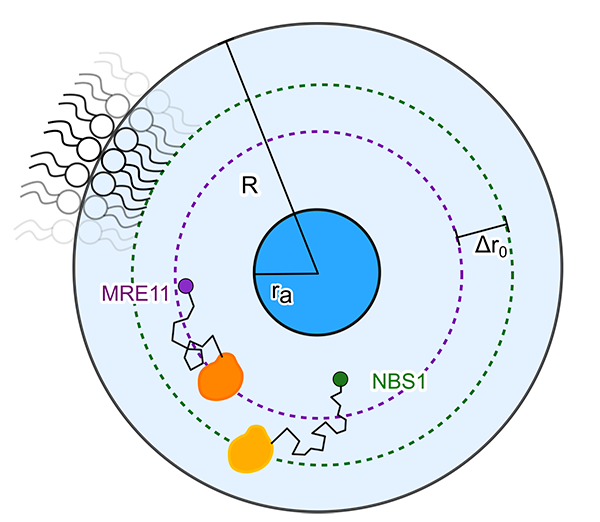
DNA damage is a prevalent issue in living cells, occurring frequently due to various factors, including radiation exposure. The consequential lesions, such as single or double-strand breaks, pyrimidine dimers, base loss, or changes, necessitate repair mechanisms to prevent cellular malfunction or death. These processes involve intricate pathways designed to mend DNA, ensuring the preservation of genetic integrity. Among these pathways, repairing double-strand breaks and addressing UV-induced damage are of particular significance.
In our research group, we contribute to understanding these repair mechanisms by employing diverse theoretical methods. Our focus spans from investigating the recruitment kinetics of key repair proteins to studying the intricate interactions between proteins and damaged DNA. For instance, we explore the recruitment time of crucial repair proteins like MRE11, RAD50, and NBS1, elucidating their diffusion-driven arrival at DNA lesions. Moreover, we delve into the structural and functional disparities between proteins like photolyase and cryptochrome, aiming to unveil why cryptochrome lacks the repairing ability of photolyase. Through molecular dynamics studies, we discern the critical role of specific amino acids in binding to damaged DNA, offering insights into fundamental differences affecting repair mechanisms. These investigations enhance our comprehension of DNA repair processes, shedding light on repair protein recruitment dynamics and DNA-protein interactions.
